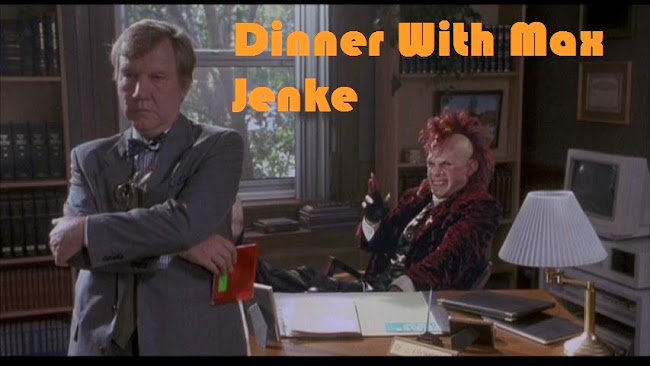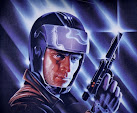 The most that I've ever asked out of Platinum Dunes' string of remakes is that the new film be at least a little better than the worst entry in the original series. It doesn't have to top the original - that would be setting the bar impossibly high both for them and for me - but I do think the remake has to edge out the worst of the sequels. Otherwise, what good is it? When you're only asking that a Texas Chain Saw Massacre remake be slightly better than Texas Chainsaw Massacre: The Next Generation (1994) or that a Friday the 13th remake be just a marginal improvement over Friday the 13th Part VIII: Jason Takes Manhattan (1989), I think that's like handing out an easy win. Most critics and fans are much, much harder on Platinum Dunes' filmography than myself but as a viewer, I'm easy. When I go to the movies, I'm looking to be entertained and to that end, I'll let a lot of things slide without complaint. Given that, when I tell you that I kind of hated the shit out of the Nightmare on Elm Street remake, don't think that I went in with the mind to trash it.
The most that I've ever asked out of Platinum Dunes' string of remakes is that the new film be at least a little better than the worst entry in the original series. It doesn't have to top the original - that would be setting the bar impossibly high both for them and for me - but I do think the remake has to edge out the worst of the sequels. Otherwise, what good is it? When you're only asking that a Texas Chain Saw Massacre remake be slightly better than Texas Chainsaw Massacre: The Next Generation (1994) or that a Friday the 13th remake be just a marginal improvement over Friday the 13th Part VIII: Jason Takes Manhattan (1989), I think that's like handing out an easy win. Most critics and fans are much, much harder on Platinum Dunes' filmography than myself but as a viewer, I'm easy. When I go to the movies, I'm looking to be entertained and to that end, I'll let a lot of things slide without complaint. Given that, when I tell you that I kind of hated the shit out of the Nightmare on Elm Street remake, don't think that I went in with the mind to trash it.The goal of returning Freddy to being a true figure of fear was - in principle - an admirable ambition on the part of the filmmakers. Unfortunately, A Nightmare on Elm Street '10 feels like the work of people who just don't know how horror movies work. For that matter, it also feels like the work of people who don't know how movies work. The first feature film from acclaimed music video director Samuel Bayer, this new Nightmare is completely inert. There's no suspense, no urgency, no dynamics between the actors, no sense that one scene should build on the last; it's a film made by someone too concerned with creating a look to bother with a story. This movie introduces the concept of "micro-naps," and let me tell you - I think a lot of viewers of this film will be forced to take macro-naps to get through its running time.
The script by Wesley Strick and Eric Heisserer floats a couple of interesting concepts; the idea of casting some doubt on Freddy's guilt is intriguing and I liked the suggestion that perhaps only Nancy is able to bring Freddy out of the dream world. That does it for anything worthwhile not found in the original, though. The rest is just a sombulistic shuffle, shoehorning in lifeless recreations of moments from the first film - homages that only serve to do unnecessary damage to the remake. For example, when Freddy pushes against the wall over the bed that Nancy is lying on, causing the wall to stretch like rubber, even the most ardent defender of CGI will balk at how the practical approach of the original was abandoned. I guarantee you the same moment would've produced at least a minor cheer from audiences had they done it in the practical style of the original - just for the fact that it would have been neat to see them keeping it old-school, at least for that one famous shot. With the CGI, though, it looks like shit and - happening early in the film as it does - it automatically sours the mood.
Speaking of sour, what's up with kids these days? I don't know if actual teenagers are really this dour as a rule but the kids in this film are a miserable pack. Sure, they've got a lot to worry about, what with being stalked in their dreams and all, but how about showing some signs of personality? In the original film, all four of the main character were distinct and memorable (even the asshole, Rod, had a certain charisma thanks to Nick Corri's performance). As played by Heather Langenkamp, the original Nancy was a gutsy, resourceful, and quick-witted heroine. The new Nancy, as played by Rooney Mara, makes week-old road kill look like Robin Williams at his most manic. In the original, one of the most endearing scenes involved Nancy and Tina (Amanda Wyss) howling with laughter at the comically botched attempt of Glen (Johnny Depp) to fool his mother into thinking he's staying at his aunt's house by the airport. It was a moment that effortlessly convinced the audience that these were real kids, real friends, and it helped make it matter when Krueger starts to pick them off. In the remake, however, facial expressions involving too many muscles seem to be outlawed.
As for Freddy himself, while Jackie Earle Haley was an inspired choice to take over from Robert Englund, the script lets him down badly. The make-up doesn't do him any favors, either. The awkward look of Freddy in this film reminds me of the baffling revisions made to the Supermam costume in Superman Returns (2006) in which they inexplicably couldn't even get the 'S' chest emblem right. Of course, Haley's Freddy couldn't have looked exactly like Englund's, no matter what, but putting aside the fact that the two actors have different facial structures, couldn't they at least have not given Haley such stupid cat eyes? It's distracting - every time there was a close-up of him, I kept wondering if I put fresh litter in before I left the house.
Whatever mistakes the original series may have been guilty of, the irrepressible gusto of Englund's performance and the inventiveness of the practical FX set-pieces (who can forget the Kafka-esque transformation of Debbie in The Dream Master?) always made those films work. The remake, however, has neither a memorable Freddy or any standout set-pieces to offer. It has no clue about being either fun or scary. The best anyone could possibly say about this trip to Elm Street is that it resides resolutely in the middle of the road.



















